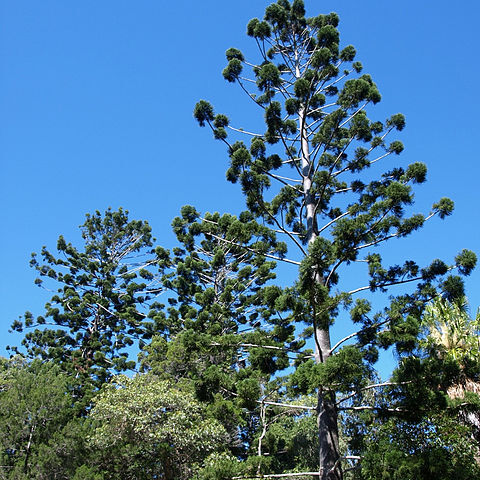Trees to 70 m tall; trunk to more than 1 m d.b.h.; bark gray-brown or dark gray, rough, transversely split; crown tower-shaped when young, becoming flat topped with age; lateral branchlets dense, drooping, almost pinnately arranged. Leaves dimorphic: leaves of young trees and lateral branchlets loosely arranged, needlelike, falcate, subulate, or triangular, slightly curved, somewhat tetragonal or ridged (not obviously so abaxially), 0.7-1.7 cm × ca. 2.5 mm wide at base, stomatal lines weakly evident on abaxial surface, apex acute or acuminate; leaves on mature trees and cone-bearing branchlets densely arranged, overlapping, stretching upward, gray-green abaxially, glaucous, ovate to triangular, 6-10 mm, ca. 4 mm wide at base, ridged or not, midvein obvious or not, distal part of leaf tapering or slightly rounded, apex acute or obtuse. Pollen cones terminal, solitary, ovoid or ellipsoid. Seed cones ovoid or ellipsoid, 6-10 × 4.5-7.5 cm; bracts narrowly obovate, sharply ridged, with thin, lateral wing, apex caudate, thickened, acute, obviously reflexed; seed scales thin at apex. Seeds ellipsoid, with a membranous, lateral wing.
A large tree. It grows 60 m high. The trunk is 1 m across. It is straight and often only forms branches high up. The bark is reddish brown. The leaves are arranged in spirals and crowded. The male cones are 8 cm long and hang down. The female cones are 6-10 cm long by 5-8 cm wide. The seeds are triangle shaped and 2-3 cm long by 1 cm wide.


